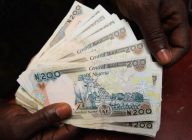News »
Sierra Leone 6th Best Performing Economy in Africa
Posted on May 25, 2018 at 04:17:46 PM AEST

Based on the World Bank report released earlier this year, Africa’s economy is projected to continue to rise to 3.2 percent in 2018 and to a further 3.5 percent in 2019.
South Africa, Nigeria and Angola, the region’s best economies will be slightly weaker than expected, as the region is still experiencing negative per capita income growth, weak investment, and a decline in productivity growth. The rest of Africa will be more favourable as non-resource intensive countries are expected to expand at a solid pace, helped by robust investment growth.
The latest forecast places Ethiopia at 8.2 percent with Ghana leading the continent at 8.3 percent. The low post-crisis increase in total-factor productivity (TFP) growth in Sub-Saharan Africa has been attributed to a slowdown in convergence to the technological frontier after a rapid catch-up in the decade preceding the crisis according to the World Bank.
The top 10 African economies to watch in 2018:
Ghana 8.3%
After a difficult 2016, Ghana saw an improved performance in 2017. Ghana is projected to see an 8.3 percent growth in 2018. The 3rd edition of the Ghana Economic Update indicates that the service sector bounced back and the fiscal consolidation is paying off. The inflation rate is down to 10 percent. Its benchmark stock index achieved the world’s highest rate of growth at 19 percent.
Ethiopia 8.2%
Ethiopia’s economy is growing at 10 percent a year and is expected to double within the next seven years. According to the World Bank, this means that by 2025, it will have grown to a middle-income nation. Ethiopia’s economy is concentrated in the services and agriculture sectors. The last 10 years has seen Ethiopia average around 10 percent economic growth. The East African country has the second highest growing economy and predicted to grow by 8.2 percent this year. Ethiopia’s economy is boosted by a number of large-scale infrastructure projects, including the Grand Renaissance Dam and a railway network.
Côte d’Ivoire 7.2%
The country’s annual growth estimates hovered around 8 percent in 2017. The West African country remains among the fastest on the African continent. Côte d’Ivoire is forecast to expand by 7.2 percent in 2018. The economic outlook for this country for the next two to three years is positive due to several factors. Côte d’Ivoire is among the largest economies in the West African Economic and Monetary Union.
Senegal 7.1%
In 2016, Senegal was termed by the World Bank as the second fastest growing economy in Africa, further validated with this past year’s economic growth. In its third quarter in 2017, Senegal’s economy grew at a rate of 7.1 percent, its strongest since the last quarter of 2015, when it was at an all-time high. Analysts expect overall growth to be as high as 6.8 percent in 2017 and the World Bank has predicted a growth of 6.9 percent for 2018.
Tanzania 7%
In the last decade, Tanzania has seen a relatively high economic growth, averaging 6–7 percent. With an overall population of about 55 million in 2016, the East African country has seen a decline in poverty. Although the real gross domestic product (GDP) growth rate slowed in 2017, in 2018 economic growth is expected to hover around 6.8 percent. Private sector involvement in the country’s development can help finance the government’s ambitious investment plans, be a source of finance and innovation, and create jobs for new entrants into the job market.
Sierra Leone 6.3%
Sierra Leone’s economic growth slowed to 4.3 percent in 2017 from 6.3 percent in 2016. Despite all of that, this West African country on the Atlantic Ocean is expected to expand by 6.3 percent in 2018. Total domestic revenue was 3 percent short of its 2017 target of 3.4 trillion, increasing only slightly to 12.3 percent of gross domestic product (GDP) from 11.9 percent of GDP in 2016.
< Previous news
Next news >
